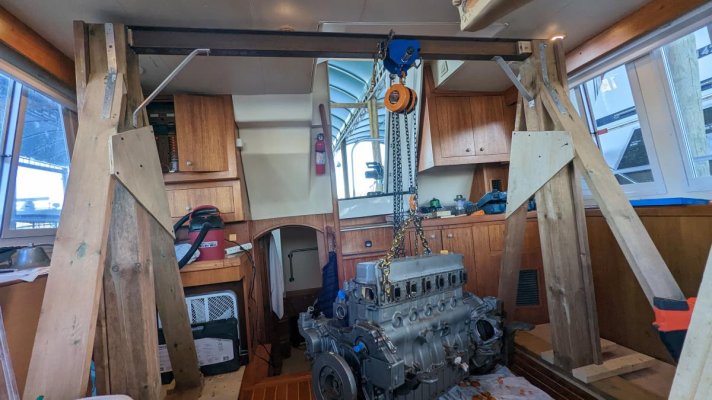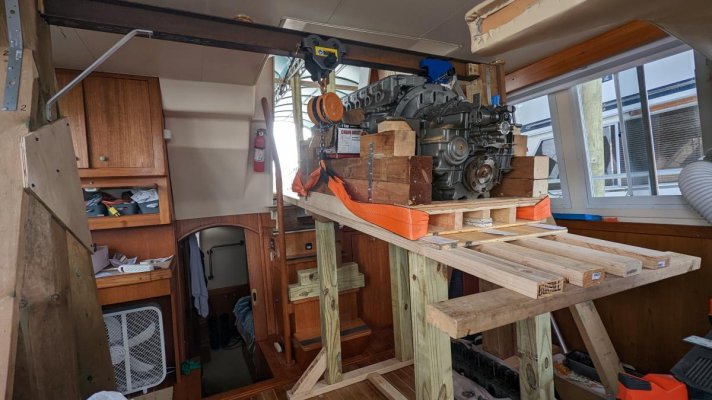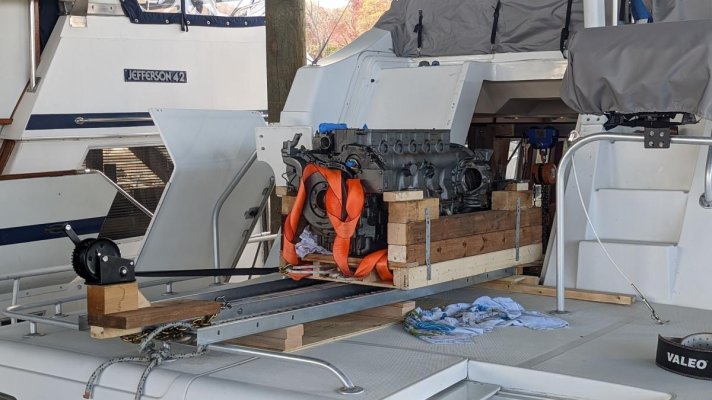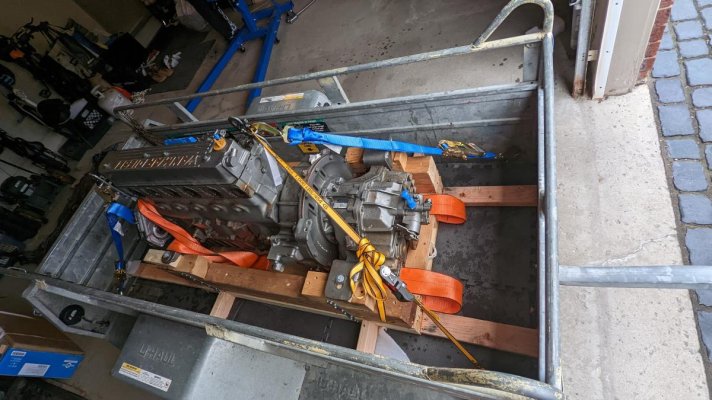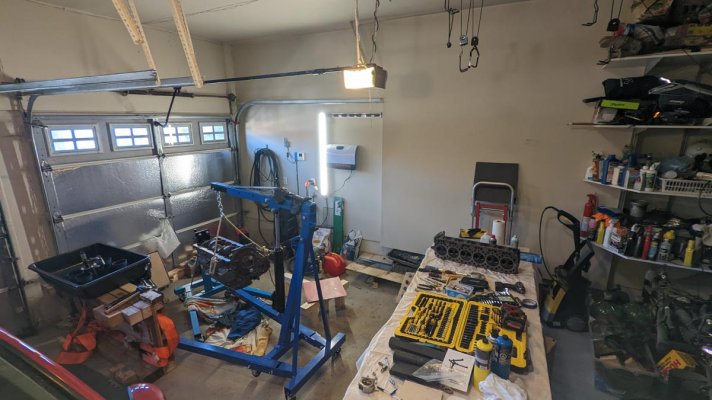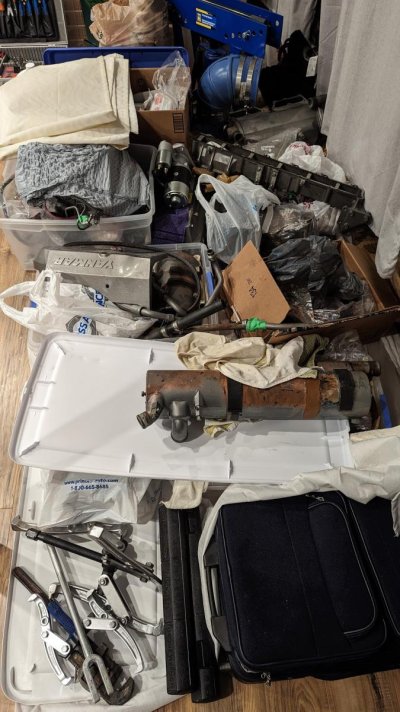Waterant
Senior Member
By popular request (whooping 2! people expressed some interest) I will document the rebuild process of my Yanmar 6LYA-STP engine for my own records and in case it will help someone in a similar situation.
After many hours of deep research (thanks, YouTube) i learned some tips and tricks to make this rebuild successful and enjoyable.
Disclaimer: I'm not a professional mechanic, and this is my first rebuild, so use this information at your own risk.
A professional mechanic will suggest you send the engine for rebuild to a good machine shop. It will take months and cost you more than a good used engine, but mechanics have to eat too.
Quotes I was getting for a rebuild started from $25k which is around the cost of a used engine like that. And there are not that many used 6LYA engines available (pretty much 0 at this time). And, a "lightly-used" engine is a very loose definition and you can end up with having to do 2 rebuilds.
Why this rebuild was started:
The engine was seized when i got this boat (2002 Mainship 430). It could not be rotated or slightly moved by a 3' breaker bar on the crankshaft nut. Applying more force would probably break something.
To get this over with, someone will probably ask, "why on earth did I buy a boat with a seized engine?"
- i was bored. as simple as that
From what I found so far, the water got into the cylinders from the poorly designed exhaust via turbo and air inlets (see photos). The engine was left with the water inside for a long time, so the pistons and valves rusted to the block.
Removing the injectors (and later removing the head) and soaking the cylinders with Mystery oil for 3 months did not free them up.
After taking the engine apart to the bare block, I did not find any damage to the pistons or rods, so it looks like the engine was not started with the water inside, which would cause it to hydrolock and do some physical damage.
any questions - ask
any comments - post
if you notice I'm doing something wrong, let me know - i appreciate all the help and would not be able to do this without you.
Until the next post ...
After many hours of deep research (thanks, YouTube) i learned some tips and tricks to make this rebuild successful and enjoyable.
Disclaimer: I'm not a professional mechanic, and this is my first rebuild, so use this information at your own risk.

A professional mechanic will suggest you send the engine for rebuild to a good machine shop. It will take months and cost you more than a good used engine, but mechanics have to eat too.
Quotes I was getting for a rebuild started from $25k which is around the cost of a used engine like that. And there are not that many used 6LYA engines available (pretty much 0 at this time). And, a "lightly-used" engine is a very loose definition and you can end up with having to do 2 rebuilds.
Why this rebuild was started:
The engine was seized when i got this boat (2002 Mainship 430). It could not be rotated or slightly moved by a 3' breaker bar on the crankshaft nut. Applying more force would probably break something.
To get this over with, someone will probably ask, "why on earth did I buy a boat with a seized engine?"
- i was bored. as simple as that

From what I found so far, the water got into the cylinders from the poorly designed exhaust via turbo and air inlets (see photos). The engine was left with the water inside for a long time, so the pistons and valves rusted to the block.
Removing the injectors (and later removing the head) and soaking the cylinders with Mystery oil for 3 months did not free them up.
After taking the engine apart to the bare block, I did not find any damage to the pistons or rods, so it looks like the engine was not started with the water inside, which would cause it to hydrolock and do some physical damage.
any questions - ask
any comments - post
if you notice I'm doing something wrong, let me know - i appreciate all the help and would not be able to do this without you.
Until the next post ...


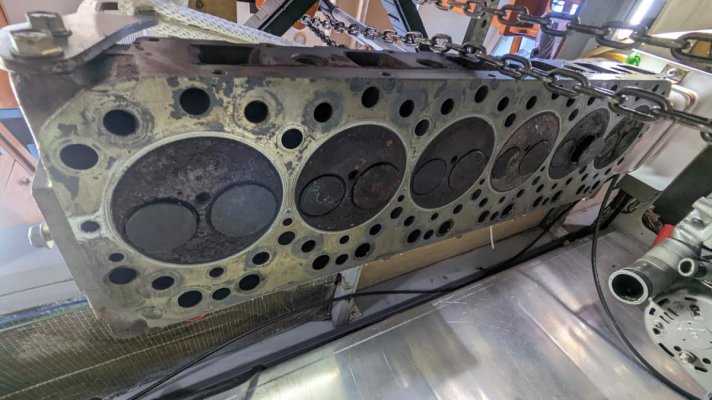
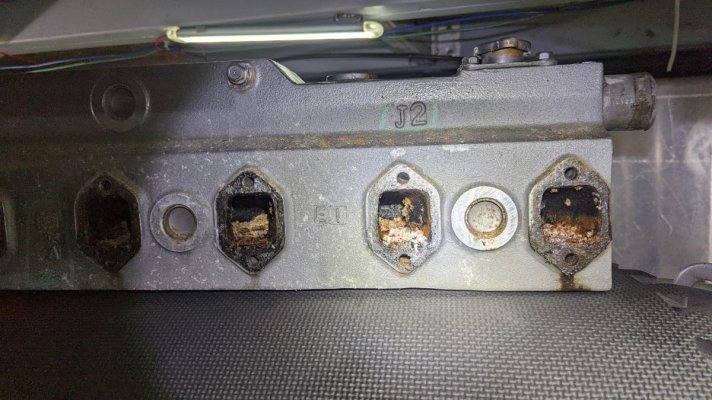

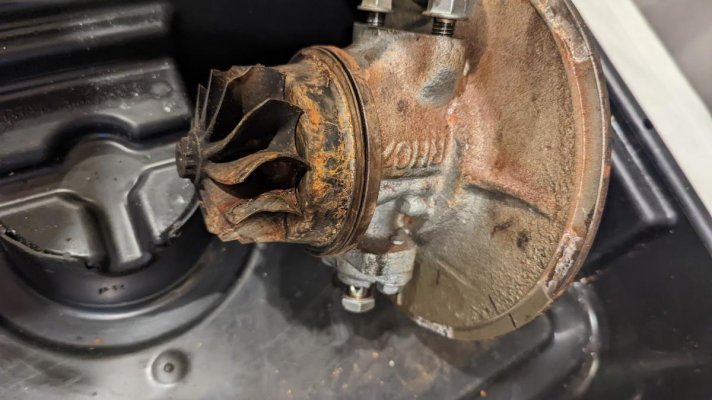
 I'm on the 3rd gallon of it now.
I'm on the 3rd gallon of it now.

